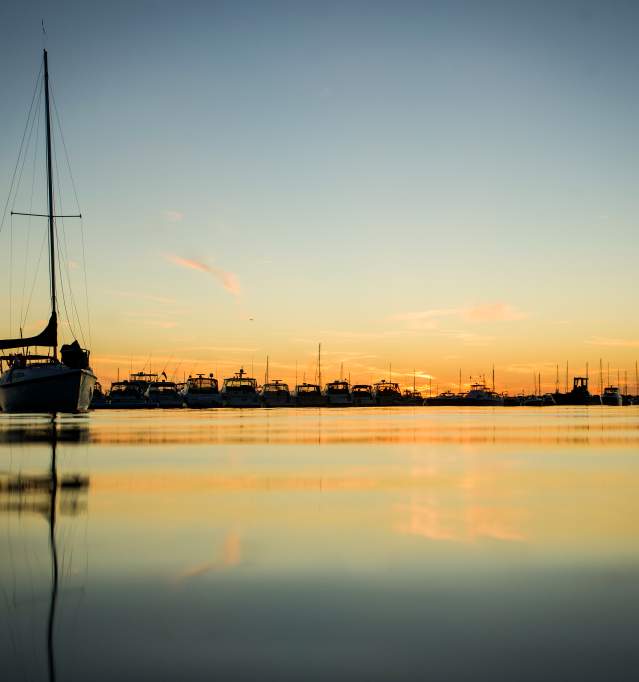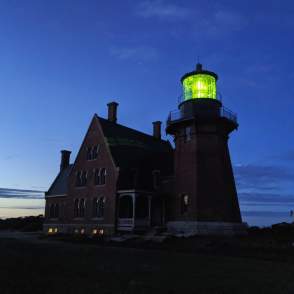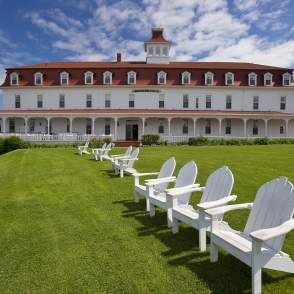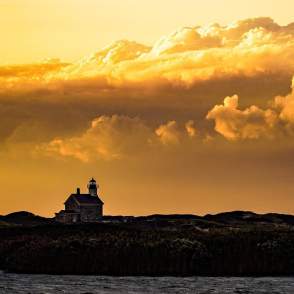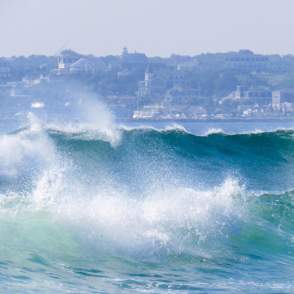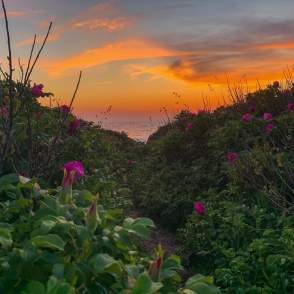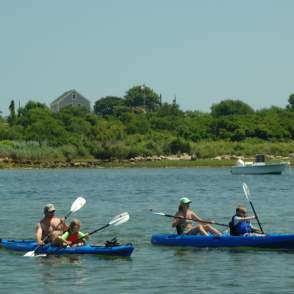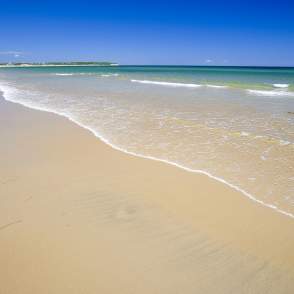HISTORY
Thousands of years ago, a glacier left rolling hills and ponds behind, forming what is now known as Block Island.
Native Americans were the first inhabitants of Block Island as evidenced by remains that date back thousands of years, most notably the Manissean Tribe. Their name for the island was “Manisses” which translates to “Island of the Little God.”
In 1614, Adrian Block, a Dutch explorer sailed to the island and gave it his name. He called it Block Island and it was in 1661 that the Island was settled.
From 1775-1783, during the Revolutionary War, the Block Islanders kept a lookout on Beacon Hill by lighting fires to warn that an enemy was in sight. In the 1800’s, an observatory was built as a tourist attraction on Beacon Hill, the Island’s highest point. Beacon Hill stands 211 feet above sea level, however, the observatory is now a private home.
In 1829, the federal government built the Island’s first lighthouse on Sandy Point. Four lighthouses have since been built at this location. The present lighthouse, the Northlight, was built in 1867 and is open to the public for tours.
In 1854, the Spring House Hotel was built. It is the oldest hotel on the Island and is still open to the public. Nicholas Ball built the Oceanview Hotel, the largest hotel on Block Island, in 1872. He made his fortune in the California Gold Rush of the 1840’s. President Ulysses S. Grant stayed at the Oceanview Hotel and held a special session with the U.S. Supreme Court so its members would not have to interrupt their vacations by returning to Washington. The Oceanview Hotel burned to the ground in 1966.
The federal government began building the breakwater in Old Harbor in 1870. It was completed in 1873, mostly by islanders.
In 1873, the Southeast Light was built on the cliffs 150 feet above sea level. It cost $75,000. In 1993, the Southeast Light was moved back 200 feet to escape the eroding bluffs. At the time it was the largest building to be moved in one piece.
In 1896, the Women’s Christian Temperance Union erected the statue of Rebecca, which stands in the center of town. Rebecca of the Well, as noted in Book of Genesis, is carrying water for people and animals.
The Block Island State Airport was open and ready for use in 1950. Before this time, airplanes landed in the Sheep Meadow and in Minister’s Lot on Corn Neck Road.
In 1971, the Block Island Conservancy was formed to preserve open space. Rodman’s Hollow, a depression left by the glaciers, was one of the first sites to be preserved. Today about 44% of the island is preserved open space.
Shipwrecks:
There have been at least five major shipwrecks off the waters of Block Island. In 1738 the Palantine caught fire and went down off Sandy Point. In 1831 the two masted schooner Warrior was wrecked, also off Sandy Point. In 1846 a ship carrying hard coal went aground in Cow Cove and this coal eventually replaced peat as the Island’s major fuel source. In 1907 the steamer Larchmont collided with a three masted schooner, the Harry Knowlton. Island fishermen were awarded gold medals from the Carnegie Foundation for their efforts in saving the survivors. Finally, in 1939 a 416 foot Texaco tanker, the Lightburne, went aground in front of the Southeast Lighthouse carrying 72,00 barrels of kerosene and gasoline. The crew was rescued and the ship was dynamited to create less of a navigational hazard. The Lightburne is a favorite spot for ocean divers to this day.
Captain Kidd was known to frequent Block Island and many speculate that he hid at least some of his buried treasure on our shores!!
Interested in Block Island's history?
Visit the Historical Society located in Bridgegate square on Block Island.
The Block Island Historical Society houses permanent and special exhibits that chronicle Block Island's past.
Admission:
Adults $6, Students and Seniors $4. Members and Children free.
Hours of Operation:
Call for updated hours
Contact Information:
Old Town Road, Block Island, RI
Telephone: (401) 466-2481
General Services
Looking to get something done on Block Island? Look no further.....
New Shoreham (Town)
Incorporated in 1672 as the only town on the island of Block Island, New Shoreham is…
Conservancy
Formed by glaciers nearly 10,000 years ago, Block Island features a diverse array of…
Local News
To get the latest Block Island headlines check out the website of our local…
Sustainability Report 2022
During the Summer of 2022 Block Island underwent a Sustainability Study, commissioned…
Island Services
Block Island has a vast network of island services. Almost anything that you…
